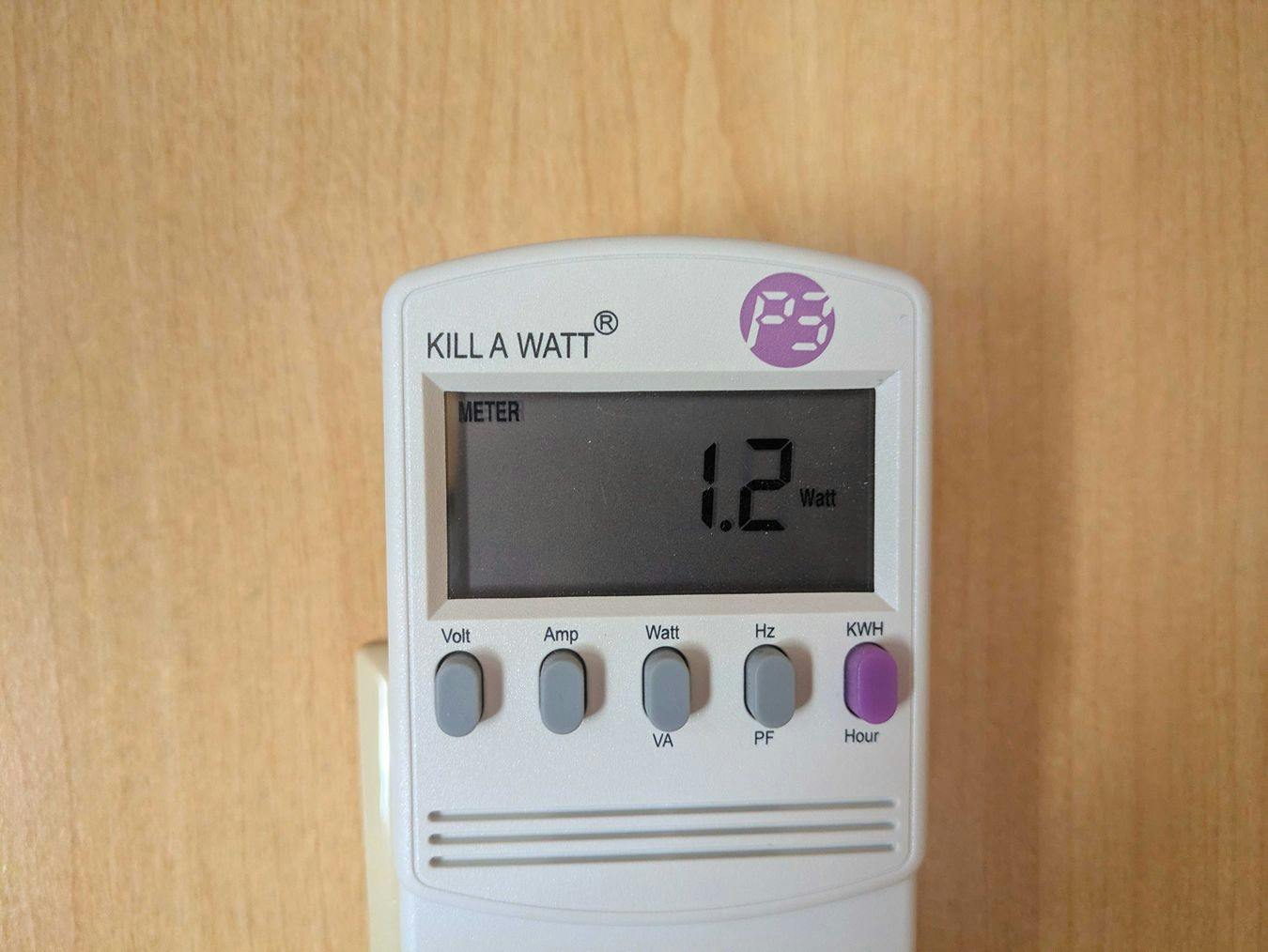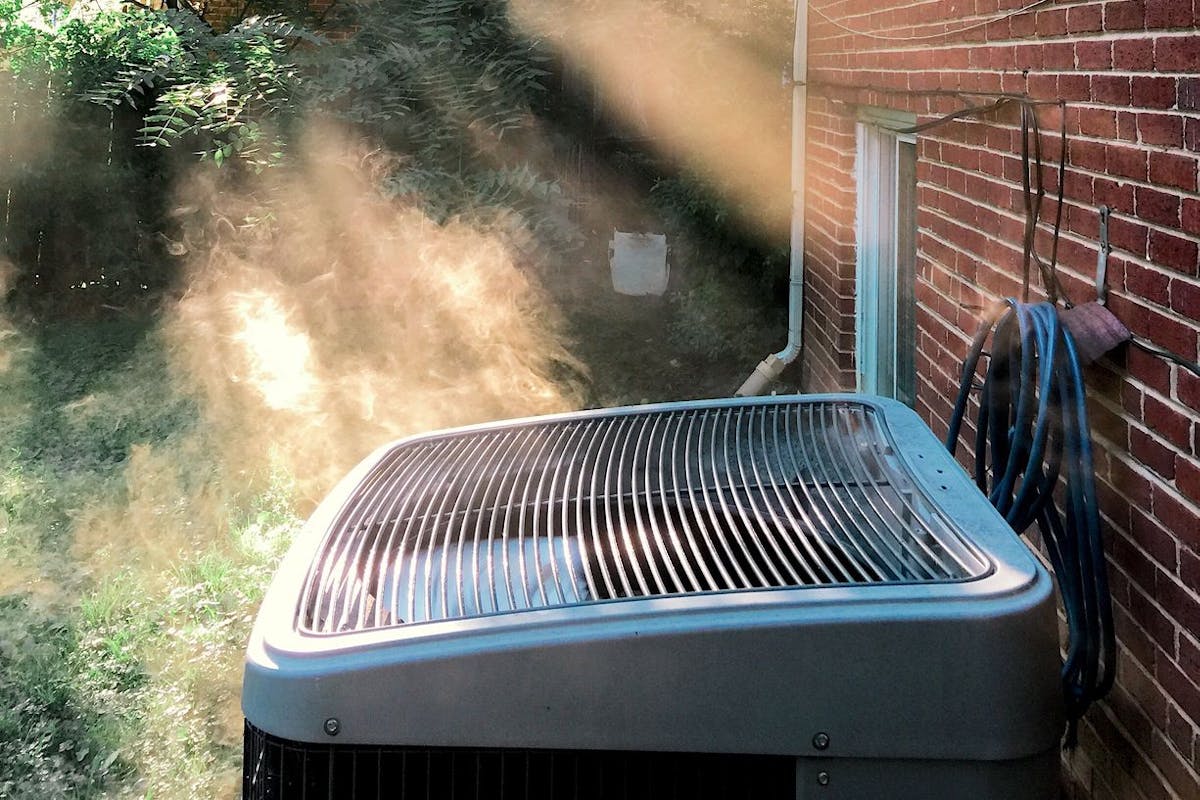The Energy Vampires Lurking in My Home, and Yours!
Last edited

Author
Andrew Blok
Electrification and Solar Writer and Editor

Editor
Andrew Giermak
Solar and Electrification Writer and Editor

Millions of vampires menace modern homes. Without realizing, we’ve invited them in and let them thrive. Lurking in the shadows, tucked against walls, they suck a steady drip of an incredibly precious resource: energy.
Many of the devices that fill our homes — TVs, computers, even microwaves — use a small amount of electricity even when they appear to be off. While each sucks up only a small bit individually, taken together the cost adds up, in both dollars and kilowatt-hours.
I recently set out to find the energy vampires in my home and drive a stake through their cold, undead hearts. Here’s what I found.
To learn more about how your home uses energy, download the Palmetto app, and start earning discounts on energy-saving devices.
The Cost of Vampire Energy
Vampire energy makes up 5-10% of the average home’s energy consumption, according to the Lawrence Berkeley National Laboratory (LBNL). The NRDC estimates it accounts for up to 23%. If you had the average bill ($142.26 in 2024, according to the EIA), vampire energy could be costing you anywhere from $7.11 to $32.72 a month. (Not every part of every electricity bill is affected by how much electricity you consume, so eliminating 5% of your electricity use may not reduce your bill by a full 5%.)
Vampire energy is also responsible for a ton of climate warming emissions: about 1% of the global total, LBNL says.
Cost of vampire energy (LBNL)
| Device | Standby energy consumption up to… | Cost at 2024 average residential electricity rate |
|---|---|---|
| Cable or satellite television box | 262 kWh/year | $43.31 |
| Stereo | 236.52 kWh/year | $38.98 |
| Gaming console | 214.62 kWh/year | $35.37 |
| Television | 208.49 kWh/year | $34.36 |
| Laptop | 175.20 kWh/year | $28.87 |
| Computer monitor | 155.93 kWh/year | $25.70 |
| Security camera | 82.34 kWh/year | $13.57 |
Credit: Lawrence Berkeley National Laboratory
The Vampires Hidden in My Home
To get a grasp on what blood electricity suckers were inflating my electric bill, I traveled far (from my living room to my home office) with a trusty electricity usage meter by my side. Just like Van Helsing and his…wooden stake? (I haven’t read the book.)
I used a Kill A Watt, a simple device that plugs into the wall and then reads the electricity usage of a device plugged into it. You could also use a smart plug with energy monitoring capabilities.
See how much you can save with home energy changes
After my fact-finding expedition, I felt both pretty good about the state of my home and further committed to managing the energy vampires in my home.
For example, my TV, which is plugged into a power strip alongside a DVD/Blu-ray player and an aerial antenna, pulled about 3.4 watts. That translates to 81.6 watt-hours a day (3.4 watts x 24 hours) and 29,784 watt-hours a year, or 29.784 kilowatt-hours. For the pleasure of having my TV plugged in and ready to turn on all year, I’d pay Xcel Energy in Colorado $2.73, even if I never used it. (My electricity rate is $0.1038/kWh June through September and $0.0857/kWh the rest of the year.)
Energy vampires in my house
| Device | Demand (w) | Yearly (kWh) | Annual cost |
|---|---|---|---|
| TV setup | 3.4 | 29.784 | $2.73 |
| EV Charger | 1.5 | 13.14 | $1.21 |
| Mower battery charger | 0.4 | 3.504 | $0.32 |
| Home office #1 | 2.4 | 21.024 | $1.93 |
| Home office #2 | 12 | 105.12 | $9.64 |
| Internet | 17.7 | 155.052 | $14.23 |
| Microwave | 1.2 | 10.512 | $0.96 |
| Personal laptop #1 | 5 | 43.8 | $4.02 |
| Personal laptop #2 | 5 | 43.8 | $4.02 |
As you can see most of my energy vampires were relatively small: my level 1 EV charger, a lawn mower battery charger with a fully-charged battery, and my microwave may not be worth addressing.
Some bigger vampires emerged though. My internet setup, which consists of an always-on router and modem, would consume about 155 kWhs a year, costing $14.23. One of our family’s home offices would burn about 105 kWhs, for $9.64 a year, even if the door was locked for a year.
If I left my work laptop plugged in, it would draw a relatively small 2.4 watts. But if I left it open with a screensaver running (something I do from time to time, unfortunately), it draws about 22 watts, almost 10 times the power.
The Cost of My Energy Vampires
I’d pay $31.02 for the privilege of keeping the above devices on standby for a year. My vampires don’t cost me as much as the averages laid out above. There are a few reasons I can see.
One, my house doesn’t have a ton of the typical culprits: no gaming console, no smart speakers, no desktop computer, and no stereo system.
Two, my electric rate is below the national average, which was 16.48 cents per kilowatt-hour in 2024. And, this isn’t an exhaustive list, though the vampire loads left out are probably small. My oven and dryer, for example, aren’t compatible with my Kill A Watt.
But, cutting down my vampire energy could still be worth it. Eliminating eight hours of vampire energy a day, I’d save $10.34 in a year.
See how much you can save with home energy changes
Slaying the Vampires
If I wanted to banish my energy vampires, I’d have a few tools at my disposal.
A power strip with an on-off switch can eliminate standby power for any devices plugged into it, making it a good fit for systems of devices, like a home office or my TV-DVD player-Roku set up.
Smart plugs are cheap and effective options for single devices and can be set to a schedule or controlled remotely through an app.
While the savings for each individual device is small, the cumulative impact can be meaningful, especially when taken together with other energy-saving interventions. And, as energy prices continue to increase, so do the benefits of cutting back on vampire energy.

Eeeeeeeeeek! Credit: Andrew Blok
As it stands today, a smart plug deployed in my house could pay for itself in just a few years, if it cut back eight hours of standby energy from some of my largest offenders.
You can also buy Energy Star devices and appliances, which typically have lower standby demands, and adjust settings on your devices (when possible) to reduce vampire energy use.
If you want to learn more about how your home uses energy and earn discounts on energy-saving devices, download the free Palmetto app today. When you take actions and earn points you can earn discounts of smart thermostats ($39 off), an energy monitor ($20 off), and more.
See how much you can save with home energy changes
Frequently Asked Questions
What is vampire energy?
Vampire energy, also known as phantom load and standby energy, is the energy a device uses when it’s apparently off.
What are the biggest energy vampires?
TVs, computers of all sorts, gaming consoles, and cable and satellite boxes are some of the hungriest and costliest common energy vampires.
How can you stop energy vampires?
Smart plugs and power strips are simple ways to completely cut off power to an energy vampire when it’s not in use. You can simply unplug devices when you don’t need them.

